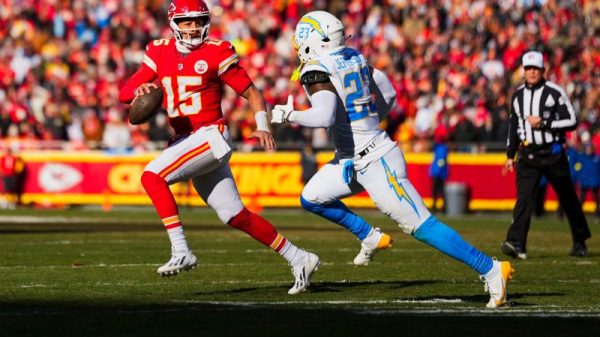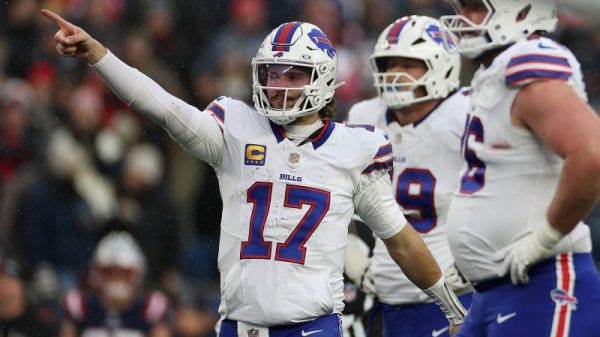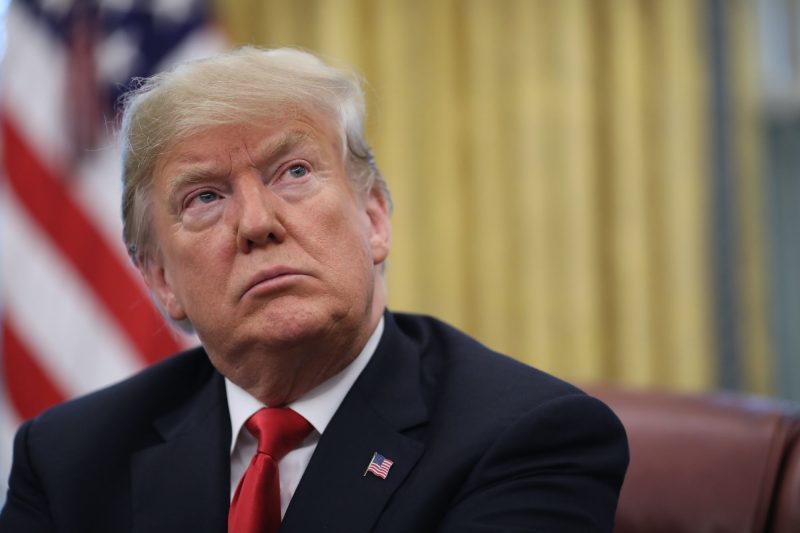To date, Donald Trump’s 2024 presidential campaign has consisted of one poorly reviewed launch event in November, an incessant flurry of hyperactive messages on the social media platform he owns and the sporadic release of videos meant to function something like position papers.
In one video, for example, the former president delineated a scattershot set of proposals purportedly centered on the First Amendment but really meant to highlight the ways in which he feels social media companies like Twitter were unfair to him during the 2020 presidential election. You probably didn’t hear about this proposal because, a few hours earlier, Trump had stepped all over it by announcing the launch of his NFT collection.
That’s a useful parallel to his “policy” videos, really: shoddily put-together content meant to look impressive but really created to try to extract value from his still-large base of support. With the NFTs, he wanted money. With the policies, he wants continued loyalty.
On Wednesday, Trump introduced the latest consumable element of his policy-video collection, a call for the newly created House select committee to answer specific questions about the investigation into Russian interference in the 2016 election.
In the abstract, the video seems instantaneously redundant, given that the select committee is entirely predicated on digging around as broadly as possible in an effort to suggest that something nefarious happened to Trump and, by extension, the political right. But in the particulars, Trump’s bullet-point list of queries shows something else: how he — and so many people — use the guise of “just asking questions” to bolster unfounded or debunked conspiracy theories.
The video, shared by aide Liz Harrington, offers up several questions that Trump hopes the committee will answer. Despite several of them having already been answered and despite all of them being rooted entirely on insinuation rather than specific concerns.
He begins by elevating an old claim: Why did members of special counsel Robert S. Mueller III’s investigations team wipe their phones after the Justice Department inspector general began probing the initiation of the Russia probe?
This idea is rooted in a document obtained by a right-wing organization logging efforts to obtain information from cellphones used by investigators. It lists a number of people (names usually redacted), devices they used and the results of efforts to obtain information from the devices. This is not a list of wiped devices, mind you; instead, it’s a list of scores of phones sought once the inspector general’s probe began and an articulation of what information was recovered from them — often a lot.
In other words, this claim relies on cherry-picking a number of times that the devices were reset, like when users forgot their passwords or after the phones were cycled out of use — and suggesting that effort was meant to stymie a probe that, in some cases, didn’t yet exist.
Andrew Weissman, one of the Mueller team, points out that the inspector general had other means of obtaining the same data. This was already publicly known: A controversy — stoked by Trump — in which it was alleged that the messages of two FBI employees had been erased fizzled out after the government managed to recover the messages. What’s more, there’s no indication in the inspector general’s final report itself that it was in any way hampered by a lack of messages and no suggestion that it believed there to be an effort to obstruct the probe in that way.
But now step back. Is there any evidence that there was something being hidden in the first place, something that necessitated the wiping of a device? There is not. There is a sense among Trump and his allies that the Mueller team was up to no good and the “wiping” was used as evidence only of that sense. Trump’s question serves the same desired outcome: insinuating wrongdoing that he and his followers already assume must have happened, despite the lack of evidence for it.
“Can you imagine what we would have found with [former FBI officials Lisa] Page and [Peter] Strozk and all of them?” Trump says after asking the question, helpfully cutting to the chase. Just imagine how bad these people were! And once you’ve imagined that, there’s really no need to answer the question in the first place.
(Trump is also advantaged, of course, by how long it took him to raise his “question” and how long it took me to pick it apart.)
Next, he ties the Mueller probe to the always-hated press.
“Who in the Mueller team was in charge of leaking secret information and fake news stories to dishonest journalists,” Trump asks, “of which there are many to perpetrate the Russia hoax?”
Actually, the Mueller probe was remarkably tight-lipped. There was a constant barrage of reporting on ties between Trump’s campaign team and Russia, but those were generally either responding to indictments obtained by Mueller or a function of independent reporting. Again, though, Trump doesn’t care about that. He wants people to think the Russia investigation was illegitimate, which it wasn’t, and that the press was complicit in intentionally spreading false claims, which it wasn’t.
Trump then asks why FBI and CIA officials bought “liability insurance” on the day the dossier of reports compiled by former British intelligence official Christopher Steele became public. This claim is based on a text-message exchange between two people that was highlighted by attorneys for former national security adviser Michael Flynn. This, too, is classic Trump: find something new or obscure that hasn’t been picked apart 1,000 times and elevate it as significant not because it is but because it hasn’t yet been shown not to be. Did this insurance-purchasing actually happen? What difference! What matters is that Trump can talk about it.
Case in point, his next question.
“How many fake news journalists been paid or compensated by U.S. government agencies directly or indirectly,” Trump asked, “for their role in spreading domestic disinformation like the FBI did with Twitter?”
This is not a terribly sharp question, not that that’s the point. He’s taking a bit of misinformation that emerged on the right recently — that the FBI paid Twitter to censor people — and suggesting that the government paid the media to spread misinformation. But the FBI didn’t pay Twitter to censor people. It followed federal law that mandates the government repay technology companies for providing information in compliance with subpoenas. It’s as though I bought something from you on Etsy and sent you a check for $100 with a letter thanking you — and then someone took that letter and tried to argue that it showed I was paying you to post rude Facebook comments.
This has been debunked, lots of times, conclusively. Trump doesn’t care. His allies don’t care. His supporters don’t care. It sounds bad. Can you imagine what the FBI tried to cover up with Twitter and Facebook and all of them?
Trump asks a generic question about the government trying to upend the 2020 election, which is just a vague, unremarkable Trumpism. But then we get to his meaty final “question.”
“What was the role of federal agents and informants in pressing the crowd toward the Capitol on Jan. 6?” he asked. “And who is Ray Epps?”
The central cause of the Capitol riot, of course, is the guy asking this question, the guy who constantly misled his followers about the 2020 election, who encouraged them to come to Washington on that day, who riled them up despite knowing that they had weapons and who then directed them at the Capitol. But Trump isn’t excited about copping to all of that, so he has no qualms about asking the conveniently unanswerable question of potential FBI involvement.
The FBI, of course, doesn’t say when it has agents somewhere because if it started doing so, you could figure out FBI infiltration by a process of elimination. “Do you have agents infiltrating Organization X?” “No.” “How about Organization Y?” “Uh, no comment?”
But it’s the “Ray Epps” mention that’s the real tell. Epps, a guy caught on tape encouraging people to go into the Capitol the day before, has become a central part of the half-baked conspiracy theory that the riot was somehow triggered by federal agents. His presence — and lack of culpability — has been examined and demonstrated at length, but Trump et al. don’t care. “Who is Ray Epps” is to the Capitol riot what “jet fuel can’t melt steel beams” was to the Sept. 11, 2001, terrorist attacks: a shorthand marker of skepticism. Or, really, a marker that the speaker, presumably like those to whom he’s speaking, rejects the evidence debunking the “question” being elevated. It’s a statement less about believing this specific thing than about a broad willingness to disbelieve anything that needs to be disbelieved to keep the central idea in play.
What Trump is doing is not producing useful, thoughtful questions to a congressional committee that plans to act in good faith. He’s simply trying to carve out a bit of the turf the committee was meant to stake out: a formalized rejection of the obvious reality of the Russia probe and Jan. 6. The committee exists to benefit from long-stoked skepticism of the official (accurate) understanding of those events and darned if Trump isn’t going to benefit from it, too.
And this is how “just asking questions” works.



























